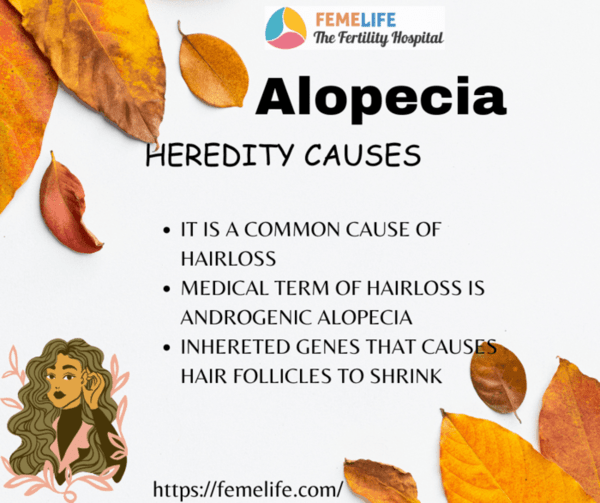HEREDITY ALOPECIA
The most common type of hair loss is hereditary-type baldness. Hereditary-type baldness isn’t a disease. It’s a condition that’s caused by a combination of genetic factors, hormonal imbalances and the natural aging process.
Hair thinning is the initial stage of hereditary-pattern baldness, which frequently leads to total hair loss on some scalp regions. Unreliable signs of hair loss include hairs on the comb, in the bathtub, and on pillows. The average non-balding person loses 100 hairs a day on average, and in some situations—like after childbirth or a serious illness—more hair may fall out.
TREATMENT:
Scalp reduction: To lessen the size of a bald area, surgically removed bald skin strips are performed.
Hair flaps: An area with good hair growth on the skin can be transferred from a less important area for appearance to a more important one.
Hair transplants: From the back or side of the scalp to a bald spot, tiny plugs of skin containing one to fifteen hairs are inserted. The best results are obtained with the more recent “micrografts,” which have the fewest hairs and are more costly and time-consuming than other transplant varieties. It can take up to 700 distinct grafts to finish a therapy. To fully reap the benefits of hair replacement surgery, up to two years may pass.
https://www.wikihealthnews.com/
